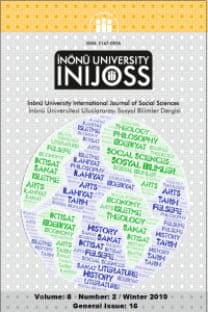URBAN SYSTEM AND DEVELOPMENT IN CONTEMPORARY IRAN
: Dependent urban system, Merchant forces, Despotism, Colonialism
URBAN SYSTEM AND DEVELOPMENT IN CONTEMPORARY IRAN
Dependent urban system, Merchant forces, Despotism, Colonialism,
___
SOURCES -Helfgott, L. M., "Tribalism as a Socioeconomic Formation in Iranian History" Iranian Studies, Vol. X. 1977 (Nos 1-2, Winter-spring 1977). -Issawi, C., (1991), the Economic History of Iran, 1800-1914, University of Chicago Press, Chicago. -Kuznetsova, N.A., "Urban Industry in Persia during the 18th. And early 19th. Centuries" in Central Asiatic Review, VoL. XI, No.3. 1963, pp. 308-21. -Loeffler, Reinhold; "Tribal order and the State: The Political Organization of Boir Ahmad",Iranian Studies, Vol. XI (1978) -Picot, H., "Biographical Notices of Members of the Royal Family, Noables, Merchants, and Clergy" F.O. 881/7028, 1897(London: Foreign Office, December) -Reid, J., "The Qajar Uymaq in the Safavid Period, 1500-1722",Iran studies,Vol. XI, 1978. -Smith Jr. John M., "Turanian Nomadism and Iranian Politics",Iranian Studies. Vol. XI, 1978. PERSIAN SOURCES Ashraf, A., (1980), Mavanee Roşde Sermayedari der İran, (1. Baskı), Zemine, Tahran. Ashraf, A., “VijegihayeTarikhiyeŞehrneşini Der İran: Doreye Kacar”, Nameye Ulume Ejtemaeei, Yaz 1975, (4). Etemad-ol Saltaneh, M. H.,(1969). Habnameh, Tehuri, Tahran. Etemad-ol Saltaneh, M. H., (1966).Hatirate Etemad- olSataneh, Mokademe ve Feharesaz İrac Avşar, Amir Kebir, Tahran. Etemad-ol Saltaneh, M. H., (1927). El- Moser ve-l Asar, (3. Baskı), Cape Sangi, Tahran. Seyyah, H.S., (1967), HatirateHacSeyyah, be Koşeşe Hamid Seyyah, Bi Na (YayınEviBelirsiz), Tahran. Shamim, A.A., (1934), İran der DoreyeSaltaneteKacar, Elmi, Tahran. Fesaeei, H.T., (1934), FarsnameyeNaseri, (2. Cilit), Bi Na,Eşraki, Tahran.- ISSN: 2147-0936
- Yayın Aralığı: Yılda 2 Sayı
- Yayıncı: İnönü Üniversitesi
URBAN SYSTEM AND DEVELOPMENT IN CONTEMPORARY IRAN
BÖLGESEL KALKINMADA ÜNİVERSİTELERİN SOSYAL VE KÜLTÜREL ROLÜ
AFGAN SAVAŞI VE SOVYET ORTA ASYASI
KUR’ÂN MEALLERİNDE ÖZNE-YÜKLEM UYUMSUZLUĞUNDAN KAYNAKLANAN BAZI ANLATIM KUSURLARI
KAMUDA SEKTÖRÜNDE YOLSUZLUK RİSKİNİ ÖNLEYİCİ BİR ARAÇ OLARAK İÇ KONTROL SİSTEMİ
ABD BAŞKANI DONALD TRUMP’IN POLİTİKALARININ STA’LARA VE GİRİŞİMCİLİK NİTELİKLERİNE ETKİLERİ
Nesrin DEMİR, M.nezif ÖZMUTAF, Bülent ERGANİ
CLEAR LIGHT OF THE DAY: FRAGMENTED POSTCOLONIAL LIVES
DEFENSIVE JIHAD: ISLAMIZATION OF THE TURKS AND TURKIFICATION OF ISLAM
KIBRIS BARIŞ HAREKÂTI VE SONUÇLARI
